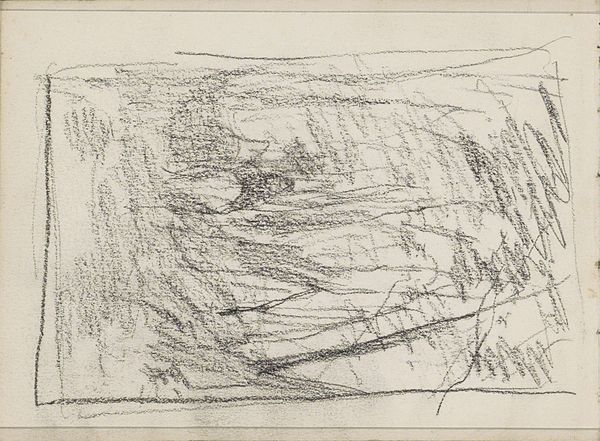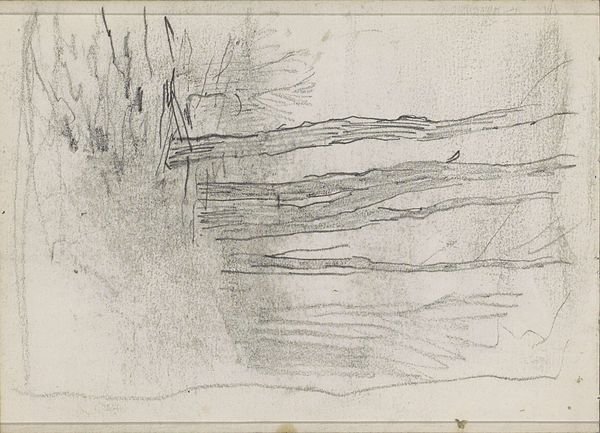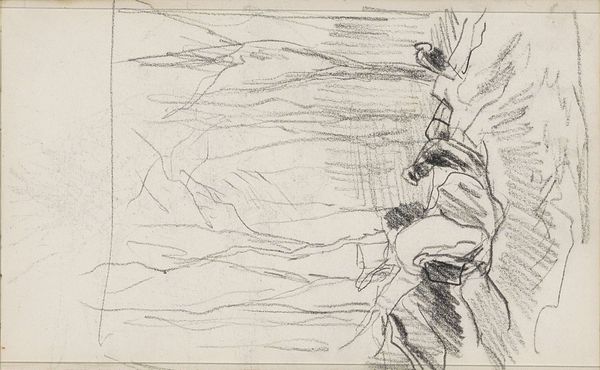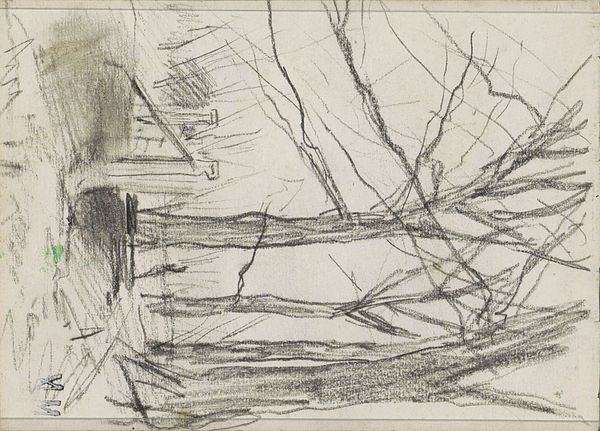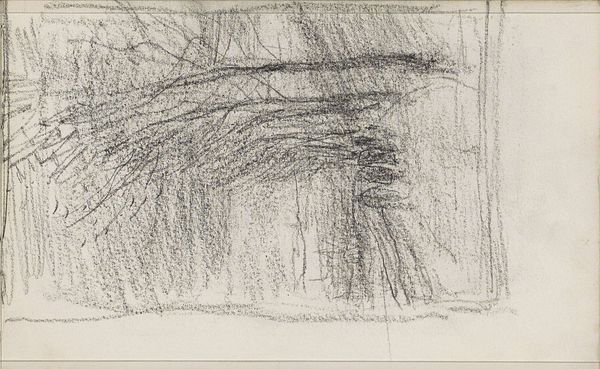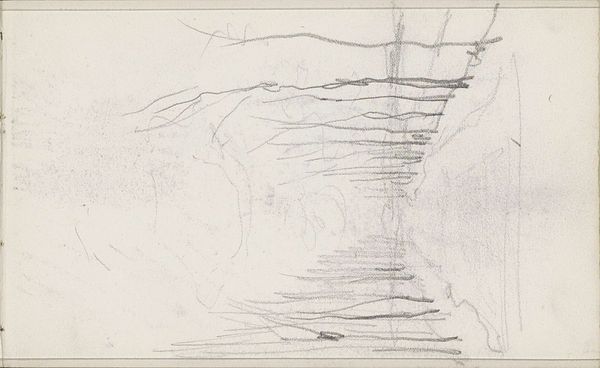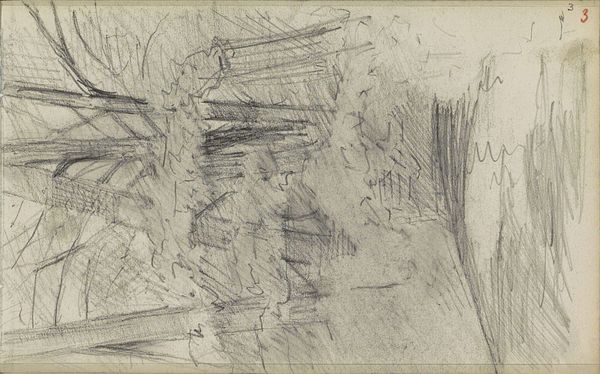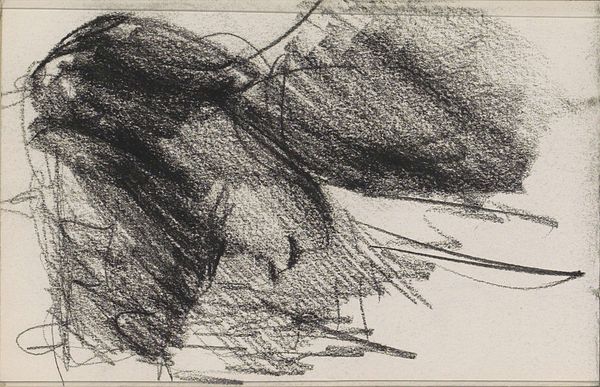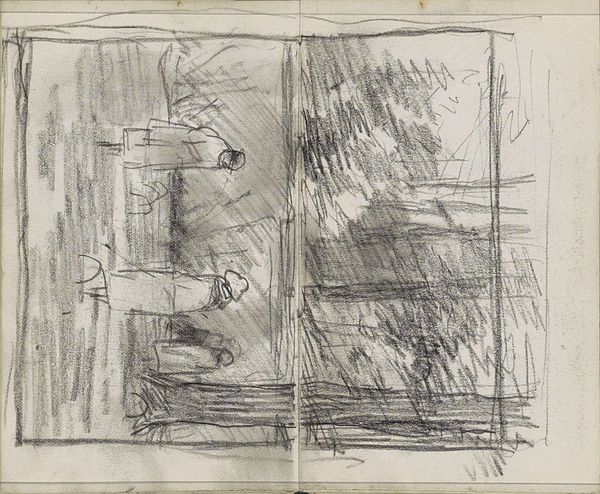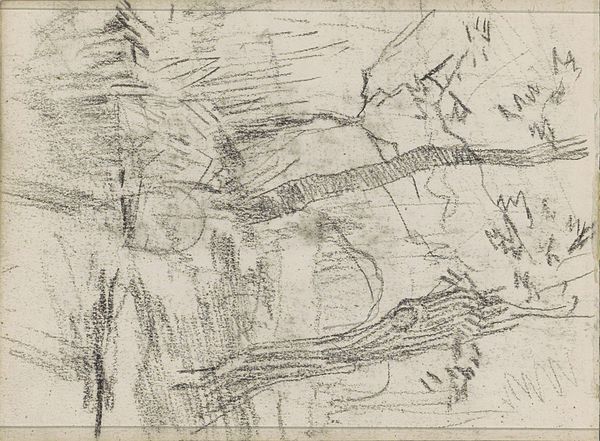
#
amateur sketch
#
quirky sketch
#
pencil sketch
#
incomplete sketchy
#
personal sketchbook
#
road
#
sketchwork
#
pen-ink sketch
#
sketchbook drawing
#
sketchbook art
#
initial sketch
Copyright: Rijks Museum: Open Domain
Editor: This is "Figure and a Rider on a Tree-lined Avenue," by Anton Mauve, made sometime between 1848 and 1888. It's currently held at the Rijksmuseum. It seems to be a pencil sketch, very preliminary. I'm curious, what catches your eye in this seemingly simple sketch? Curator: Well, immediately I see the artist grappling with the realities of depicting movement and space. The sketch isn't about illusionism but rather the labor and decision-making inherent in representing a figure and a horse in transit. Notice the repeated lines – evidence of Mauve working through the problem. Editor: So you are saying it's more about the artistic process rather than the finished product? Curator: Exactly. And think about the social context of sketching at this time. Was it intended as a study for a larger, commissioned work? Or, was sketching a more accessible way for artists, perhaps those with limited resources, to engage with the landscape? The material constraints shape the work. The very affordability of pencil and paper allowed for experimentation, a departure from more costly mediums patronized by the wealthy. Editor: That’s a great point, thinking about the cost of materials influencing artistic choices. So, the 'incomplete' nature we see could be tied to economic or even social factors? Curator: Precisely. Consider the labour involved, too. Mauve isn't meticulously rendering detail but quickly capturing an impression, maybe reflecting the pace of modern life at the time, where even rural scenes were being impacted by industrialization and the acceleration of travel. What might the tree-lined avenue itself represent in terms of access and land use? Editor: Wow, I hadn’t considered how deeply embedded material conditions are in even the simplest sketch. Curator: These sketches, then, provide direct access to artistic process but can reveal so much about labor, value, and shifting landscapes when looked at through a material lens.
Comments
No comments
Be the first to comment and join the conversation on the ultimate creative platform.
